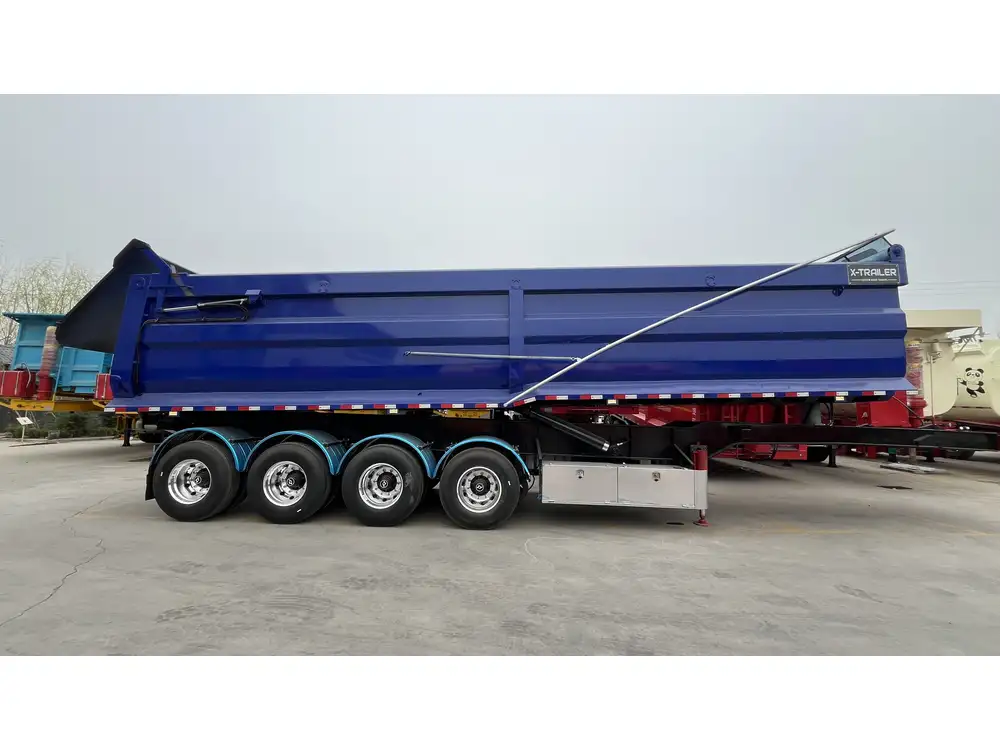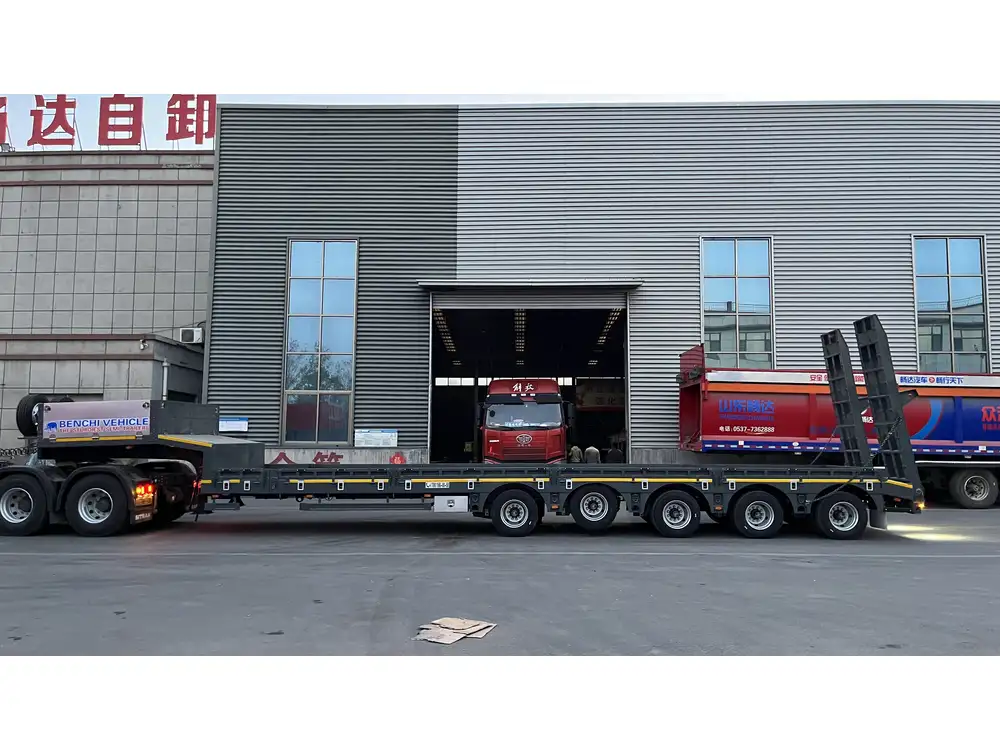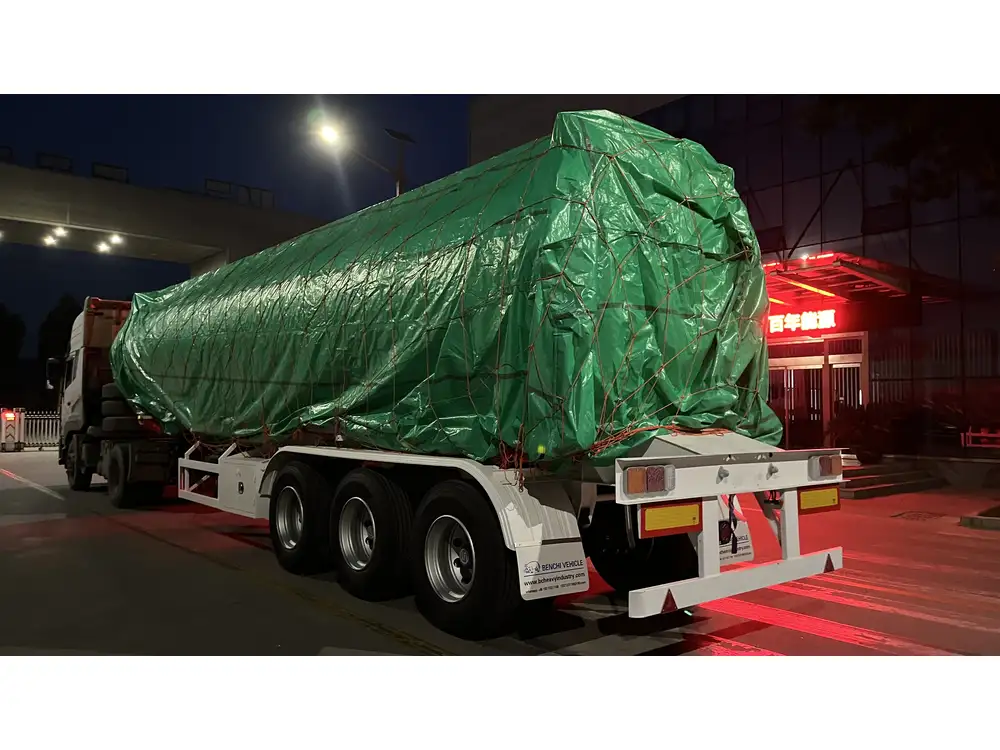When it comes to enhancing the functionality and efficiency of your dump trailer, integrating a hydraulic jack is an invaluable upgrade. Not only does it facilitate loading and unloading operations, but it also improves stability and overall safety during transport. In this guide, we will delve into the intricate details of adding a hydraulic jack to your dump trailer, providing you with step-by-step instructions and expert insights.
Understanding Hydraulic Jacks
What is a Hydraulic Jack?
A hydraulic jack is a mechanical device that uses hydraulics to lift heavy loads with minimal effort. By transferring force through a fluid, hydraulic jacks can achieve remarkable lifting power.

Types of Hydraulic Jacks
| Type | Description | Best Use Case |
|---|---|---|
| Bottle Jack | A compact and sturdy jack ideal for lifting vehicles. | Automotive applications. |
| Floor Jack | A larger jack with a low profile, suitable for heavy-duty lifting tasks. | Heavy machinery and trucks. |
| Scissor Jack | A jack that utilizes a crisscross folding mechanism to lift. | Raising smaller loads, like trailers. |
| Hydraulic Dump Jack | Specifically designed for dump trailers, offering robust lifting capacity and stability. | Perfect for dump trailers. |
Benefits of Adding a Hydraulic Jack to Your Dump Trailer
- Increased Efficiency: Hydraulic jacks can drastically reduce the time needed for loading and unloading materials.
- Enhanced Stability: By providing a reliable lift system, hydraulic jacks enhance the overall stability of the trailer during operation.
- Improved Safety: A hydraulic jack can handle loads more securely, reducing the risk of accidents associated with manual lifting.
- Easy Installation: Modern hydraulic jacks are designed for straightforward installation, making them accessible even for those with limited mechanical experience.
Preparing for Installation

Tools Required
To install a hydraulic jack on your dump trailer successfully, gather the following tools:
- Hydraulic Jack (specifically designed for dump trailers)
- Wrench Set (adjustable wrenches included)
- Socket Set
- Drill with Metal Bits (if drilling is required)
- Measuring Tape
- Level (to ensure the jack is installed correctly)
- Safety Goggles and Gloves (for personal protection)
Materials Needed
Before starting the installation, procuring the necessary materials is vital:
- Hydraulic Jack (with a lifting capacity compatible with your dump trailer)
- Mounting Brackets (these may come with the jack)
- Bolts and Nuts (for secure installation)
- Hydraulic Fluid (if the jack requires it)
- Lubricant (for smoother operation)
Step-by-Step Guide to Installing Your Hydraulic Jack

Step 1: Assess Your Dump Trailer
Before you begin installation, inspect your dump trailer to identify a suitable location for the hydraulic jack. Factors to consider include:
- Weight Distribution: Ensure the installation point does not affect the trailer’s balance.
- Accessibility: The jack should be easily reachable for efficient operation.
Step 2: Prepare the Mounting Area
- Clean the Area: Remove any debris or rust where the jack will be mounted.
- Mark the Location: Use a measuring tape to decide where the hydraulic jack will sit. It’s typically best to mount it near the center for optimal weight distribution.
Step 3: Install the Mounting Bracket
- Position the Bracket: Align the mounting bracket with the markings you made earlier.
- Drill Holes: If necessary, drill holes into the trailer frame to accommodate the bolts.
- Secure the Bracket: Using the bolts and nuts, securely fasten the mounting bracket.

Step 4: Attach the Hydraulic Jack
- Align the Jack: Position the hydraulic jack onto the installed bracket.
- Secure: Bolt the jack firmly to the bracket, ensuring it is tightly fastened.
Step 5: Connect the Hydraulic System
- Check Hydraulic Lines: For hydraulic jacks that require a hydraulic fluid connection, ensure all lines are in good condition.
- Fill with Hydraulic Fluid: If applicable, fill the jack with hydraulic fluid as per manufacturer instructions.
- Bleed the System: Remove air bubbles by following the bleeding procedure outlined in the jack’s manual.
Step 6: Test Your Installation
- Perform a Lift: Use the jack to lift the trailer slightly and check if it operates smoothly.
- Inspect for Leaks: Carefully examine the hydraulic lines and connections for any signs of fluid leakage.
- Adjust as Needed: If the jack is not functioning correctly, check your installation and make necessary adjustments.

Maintenance Tips for Your Hydraulic Jack
To prolong the lifespan of your hydraulic jack and ensure safety and efficiency, adhere to the following maintenance practices:
- Regular Inspections: Frequently check the jack and hydraulic connections for wear and tear.
- Cleanliness: Keep the hydraulic jack clean to prevent dirt and grime from hindering its performance.
- Fluid Levels: Regularly inspect and maintain proper hydraulic fluid levels.
- Lubrication: Apply lubricant to moving parts as recommended by the manufacturer to ensure smooth operation.
Common Issues and Troubleshooting
Even with proper installation and maintenance, issues may arise. Here we discuss some common problems and how to address them:
Slow Lifting Speed
Possible Cause: Low hydraulic fluid levels.
Solution: Check and refill the hydraulic fluid as needed.

Jack Won’t Lift
Possible Cause: Air trapped in the hydraulic lines.
Solution: Perform the bleeding procedure to release trapped air.
Hydraulic Fluid Leaks
Possible Cause: Worn seals or loose connections.
Solution: Tighten all connections and replace any defective seals.
Concluding Thoughts
Adding a hydraulic jack to your dump trailer can significantly enhance its functionality, allowing for safer and more efficient loading and unloading of materials. By following the steps outlined in this guide, you can confidently install and maintain your hydraulic jack, ensuring a reliable and robust trailer for your hauling needs. Whether for personal use or commercial applications, this upgrade transforms your dump trailer into a more powerful and user-friendly asset, all while simplifying the task of transport.
By implementing the suggestions and guidance provided in this article, users can enhance the utility and performance of their dump trailers, positioning themselves favorably in their respective industries. For further technical assistance or detailed product inquiries, feel free to reach out to our expert team.



